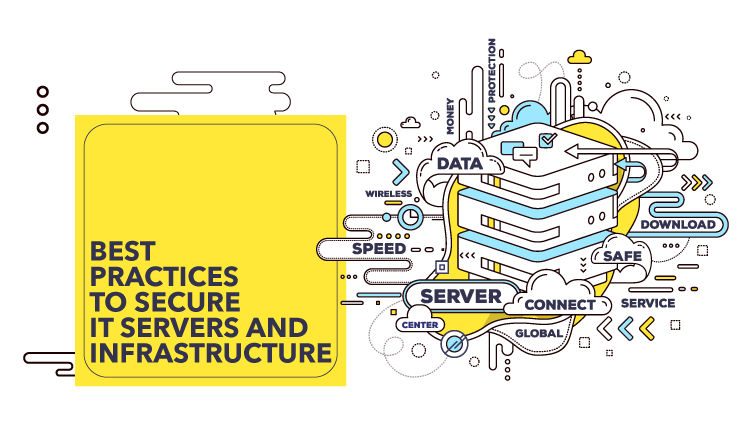In the rapidly evolving digital landscape, maintaining a secure and smoothly running IT infrastructure is paramount for the success of any business. As technology continues to advance, so do the challenges and threats associated with managing IT systems. In this blog post, we will explore essential strategies to ensure your IT infrastructure remains robust, resilient, and secure.
Conduct Regular Security Audits
The first step in fortifying your IT infrastructure is to conduct regular security audits. These audits help identify vulnerabilities and potential risks within your system. By staying proactive, you can address security gaps before they can be exploited by malicious actors. Engage with cybersecurity experts to perform comprehensive audits and implement necessary patches and updates.
Implement Robust Firewalls and Antivirus Solutions
Building a strong defense against cyber threats involves deploying robust firewalls and antivirus solutions. Firewalls act as a barrier between your internal network and external threats, while antivirus software protects against malicious software and potential data breaches. Keep these security measures up to date to ensure they can effectively counter the latest threats.
Enforce Strict Access Controls
Controlling who has access to your IT infrastructure is critical in preventing unauthorized entry and data breaches. Implement strict access controls by assigning unique user credentials and permissions based on job roles. Regularly review and update access privileges to align with organizational changes, ensuring that only authorized personnel have access to sensitive information.
Regular Data Backups
Data loss can be catastrophic for any business. Establish a robust backup system to safeguard your critical data. Regularly back up your files and systems, and test the restoration process to ensure that your data can be quickly recovered in the event of a disaster. Cloud-based backup solutions provide a secure and scalable option for businesses of all sizes.
Stay Updated with Software Patches
Cybercriminals often exploit vulnerabilities in outdated software. Keep your IT infrastructure secure by staying updated with the latest software patches and updates. Establish a routine for applying patches promptly to close potential security loopholes. This simple yet effective measure can significantly enhance your system’s resilience against evolving threats.
Educate and Train Your Team
Human error remains a significant factor in cybersecurity incidents. Educate and train your employees on best practices for IT security. Create awareness about phishing attacks, password hygiene, and the importance of reporting suspicious activities. A well-informed team is your first line of defense against social engineering and other cyber threats.
Monitor Network Activity
Implement robust network monitoring tools to keep a vigilant eye on your IT infrastructure. Monitor network activity for unusual patterns or anomalies that may indicate a security breach. Early detection allows for swift action, minimizing the potential impact of a cyber attack.
Create an Incident Response Plan
Despite your best efforts, security incidents may still occur. Develop a comprehensive incident response plan to outline the steps to be taken in the event of a security breach. This plan should include protocols for communication, containment, eradication, recovery, and lessons learned to improve future responses.
Collaborate with Managed IT Services
Consider partnering with managed IT services to enhance the security and efficiency of your IT infrastructure. These services provide continuous monitoring, proactive maintenance, and expert support, reducing the burden on your internal IT team and ensuring that your systems are always in top-notch condition.
Conclusion
Securing and maintaining a smoothly running IT infrastructure is an ongoing process that requires a combination of proactive measures, employee awareness, and the right technology solutions. By prioritizing cybersecurity and staying vigilant, you can fortify your organization against the ever-evolving landscape of digital threats. Remember, a secure IT infrastructure is not just a business necessity—it’s a strategic advantage in today’s interconnected world.
Frequently Asked Questions
Regular data backups serve as a safety net for your critical information. In the event of data loss due to cyber threats or system failures, backups ensure quick and efficient restoration, minimizing downtime and potential business disruption.
Employee education is key to bolstering IT security. Conduct regular training sessions on phishing awareness, password hygiene, and the importance of reporting suspicious activities. By fostering a culture of cybersecurity, you empower your team to be vigilant against potential threats.
Managed IT services provide continuous monitoring, proactive maintenance, and expert support for your IT infrastructure. By partnering with a managed service provider, you can strengthen your security posture, reduce the risk of downtime, and ensure that your systems are always operating at peak efficiency.
